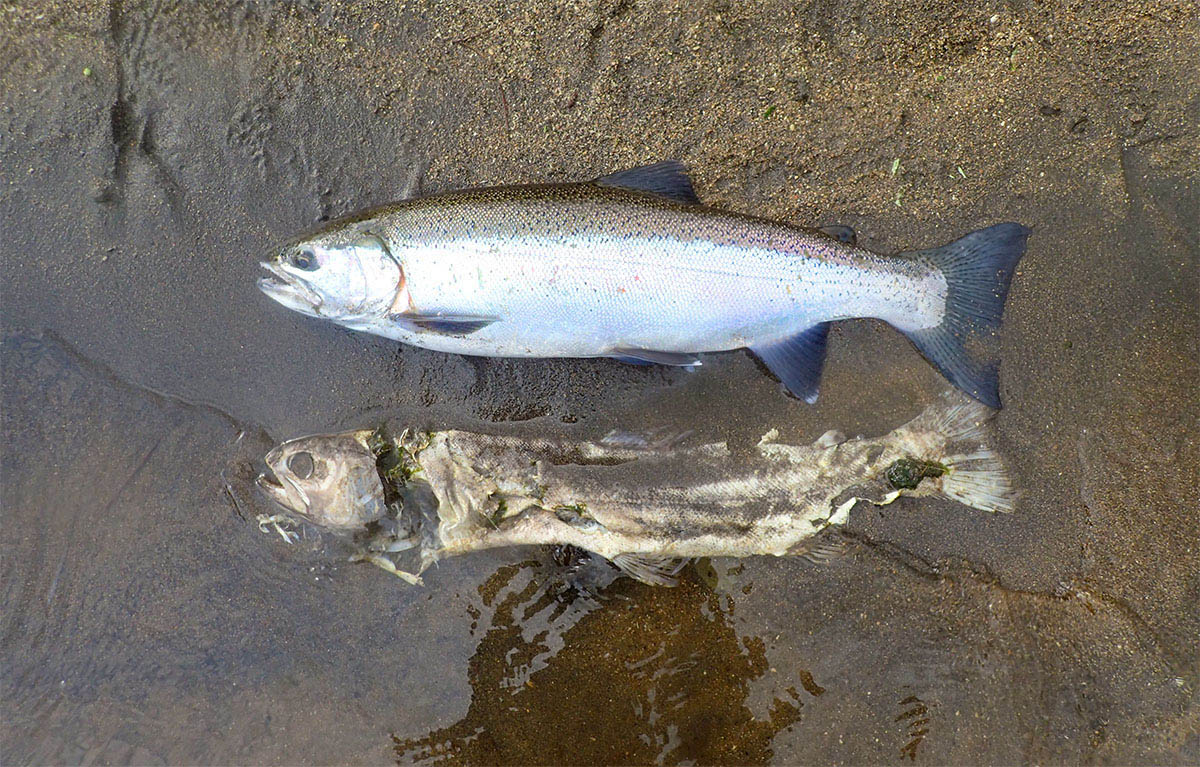Most wild trout, rainbows and browns, are spawned in tributary streams of rivers. As they grow, individual trout somehow 'choose' to spend most of their lives in a river, lake, estuary or the sea.
Distribution of Brown trout
Brown trout (Salmo trutta) are native to Europe, and were introduced to New Zealand in the late 1860s by the Otago and Canterbury Acclimatisation Societies, using fertilised eggs of ‘British trout’ from a hatchery in Tasmania.
Brown trout are now found throughout the North Island below Auckland, and throughout the South Island, but not on the Chatham or Stuart Islands.
Many rivers and waterways which brown now inhabit, were not originally directly stocked by the regional Acclimatisation Societies, but were later colonised by trout that swum into the sea then into un-stocked rivers.
Distribution of Rainbow trout
Rainbow trout (Oncorhynchus mykiss) from California in the United States were first introduced into New Zealand’s rivers and lakes in 1886, and are now found throughout the North and South Islands.
Although rainbows are the dominant trout species in some waters, they are not as widely or as evenly distributed as brown trout. New Zealand rainbow trout seem to flourish best in river systems that flow into lakes, but there are some healthy rainbow populations in certain catchments flowing directly into the ocean.
It’s not clear if this patchy distribution of rainbow trout is due to particular rivers being unsuitable or sub-optimal for them, or whether some rivers are simply better suited to brown trout, which have then out-competed the rainbows.
Although rainbows live and feed in faster flowing water, they do not seem to cope with extreme and frequent flooding as well as brown trout do. Since rainbow trout spawn later than brown trout, when rainfall and river levels in New Zealand are generally highest, their spawning may not be as successful in waterways with extreme fluctuations in flow rates.
Life-Cycles of Brown and Rainbow Trout
Rainbow and brown trout both begin life in gravel beds covered by cool flowing water. Once a male and female have paired off, the female digs a depression in the gravel with her tail fin. As she releases her eggs into this spawning ‘red’ or nest they are fertilised by the male, then covered over with gravel by the female.
Alevins (larval trout with yolk sacs) hatch from these eggs within one to three months, depending on the water temperature, and remain in the gravel for a further two to three weeks. Once the yolk sacks have been absorbed, these young trout emerge from the gravel as free swimming fry.
New Zealand brown trout spawn during late autumn and early winter, and New Zealand rainbow trout spawn in winter and early spring.
While most rainbow trout from Lake Taupo spawn in tributaries, such as the Tongariro, in winter and early spring, some spawning occurs throughout the year.
New Zealand brown trout begin spawning at three or four years old, and generally live for 8-10 years. The oldest individual fish recorded, is a backcountry specimen of 15 years.
New Zealand rainbow trout typically live 4 to 5 years, but in some catchments they live longer, e.g. specimens as old as 11 years have been recorded in the Rangitikei River.
Rainbow trout begin spawning at 2-3 years old, and while most spawn several times during their lives, some die soon after spawning for the first time.

Tongariro steelhead: one fresh from the lake, and the other that did not survive the rigours of spawning
Regardless of where trout choose to live, most will migrate back to their natal (birth) streams to spawn - except for a few 'vagrants'. In some catchments these spawning runs create impressive fishing opportunities in New Zealand, which I discuss in the following articles.
